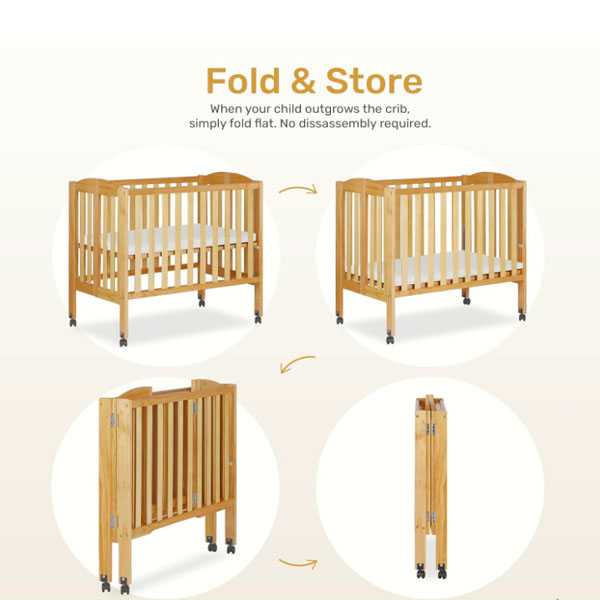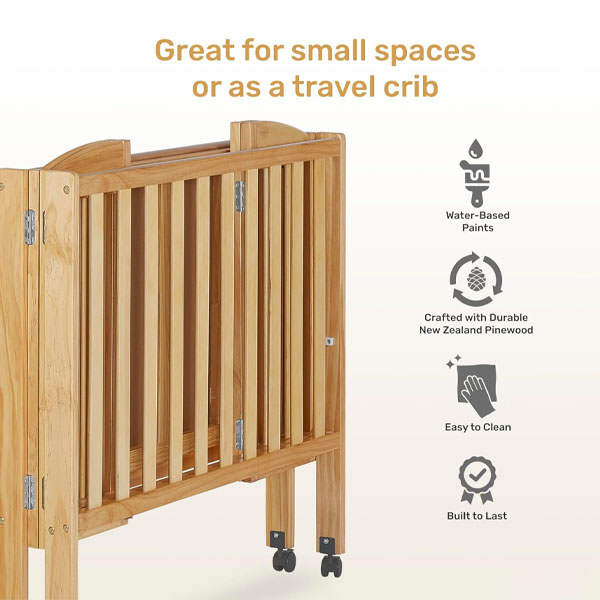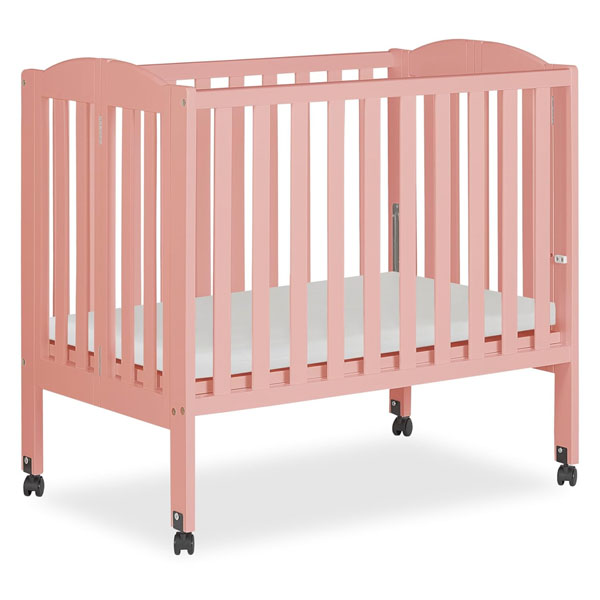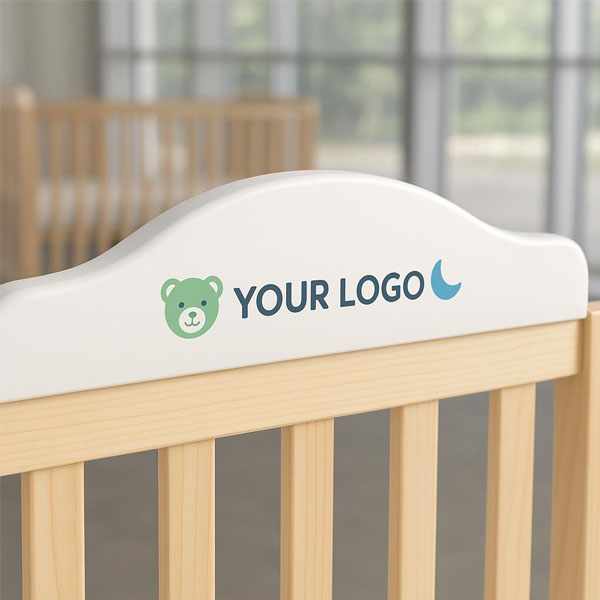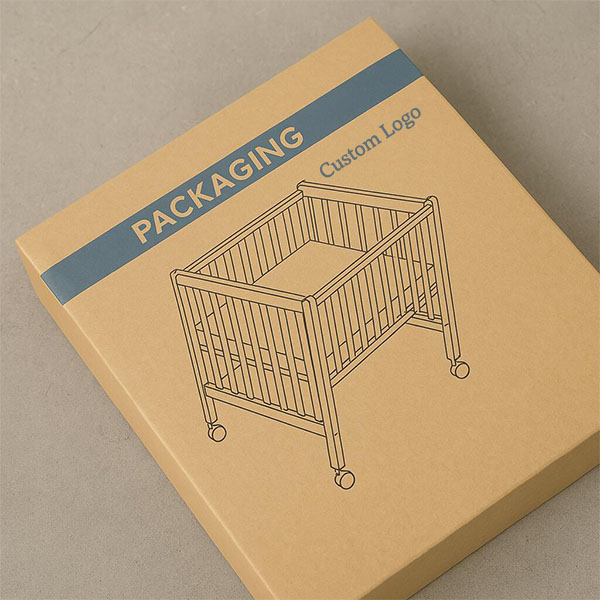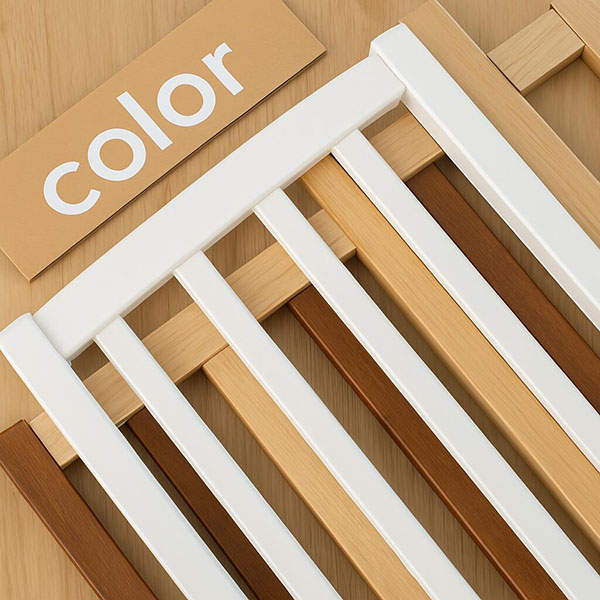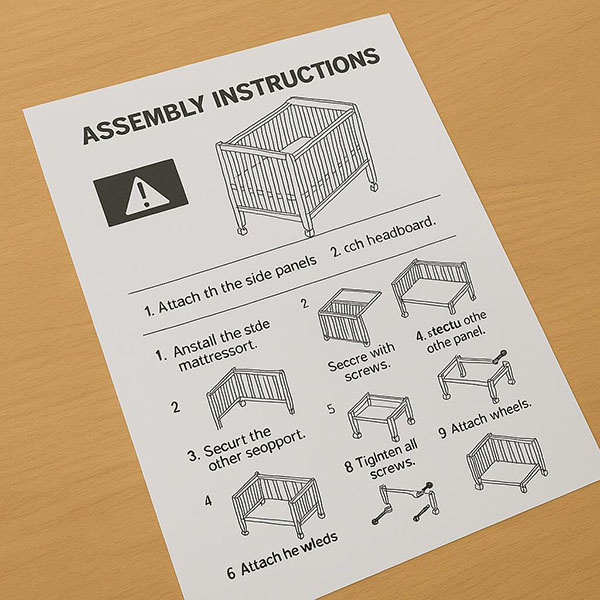How to Choose a Crib for Your Child?
Shopping for a crib is a major milestone—but with so many styles, sizes, and features, it’s easy to get overwhelmed. What really matters when choosing a crib for your baby?
To choose a crib for your child, focus on safety certification, solid construction, mattress compatibility, and whether it fits your space, budget, and long-term needs.

Whether you’re designing a dream nursery or working with a small space, this guide will help you confidently choose a crib that keeps your baby safe and supported.
What safety standards should a crib meet?
Safety always comes first—no matter how stylish the crib looks.
Choose a crib that meets modern safety standards, with fixed sides, slat spacing under 2 3/8 inches, and certification from ASTM, CPSC, or JPMA.

Must-have safety features
Avoid drop-side cribs (banned in many countries) and watch out for:
- Wide slat spacing (should fit no more than a soda can)
- Gaps between the mattress and crib frame
- Loose screws or wobbly legs
- Toxic paint or finishes
Always check for a JPMA or ASTM certification label—these ensure the crib meets tested safety criteria.
| Feature | Safety Function |
|---|---|
| Slat spacing < 2 3/8 in | Prevents baby’s head from slipping |
| Fixed sides | More stable and secure |
| Non-toxic finish | No risk from chewing or touching |
| Certified product | Meets national safety regulations |
We double-checked ours before assembly. No shortcuts when it comes to safety.
What crib size is right for your space?
Not all cribs are full-sized—and that can be a good thing.
Standard cribs offer long-term use, while mini cribs or portable cribs save space in smaller rooms or apartments.

Crib size comparison
| Crib Type | Dimensions (approx.) | Best For |
|---|---|---|
| Standard Crib | 28" x 52" | Full nurseries, long-term use |
| Mini Crib | 24" x 38" | Small rooms, apartments |
| Portable Crib | Varies, often foldable | Travel or temporary setups |
We used a mini crib in our bedroom during the early months, then moved to a full-size crib in the nursery later. It gave us space and flexibility.
Should you choose a convertible crib?
If you want a long-term solution, it’s worth considering.
Convertible cribs grow with your child, changing into toddler beds, daybeds, or full-size beds—offering more value over time.
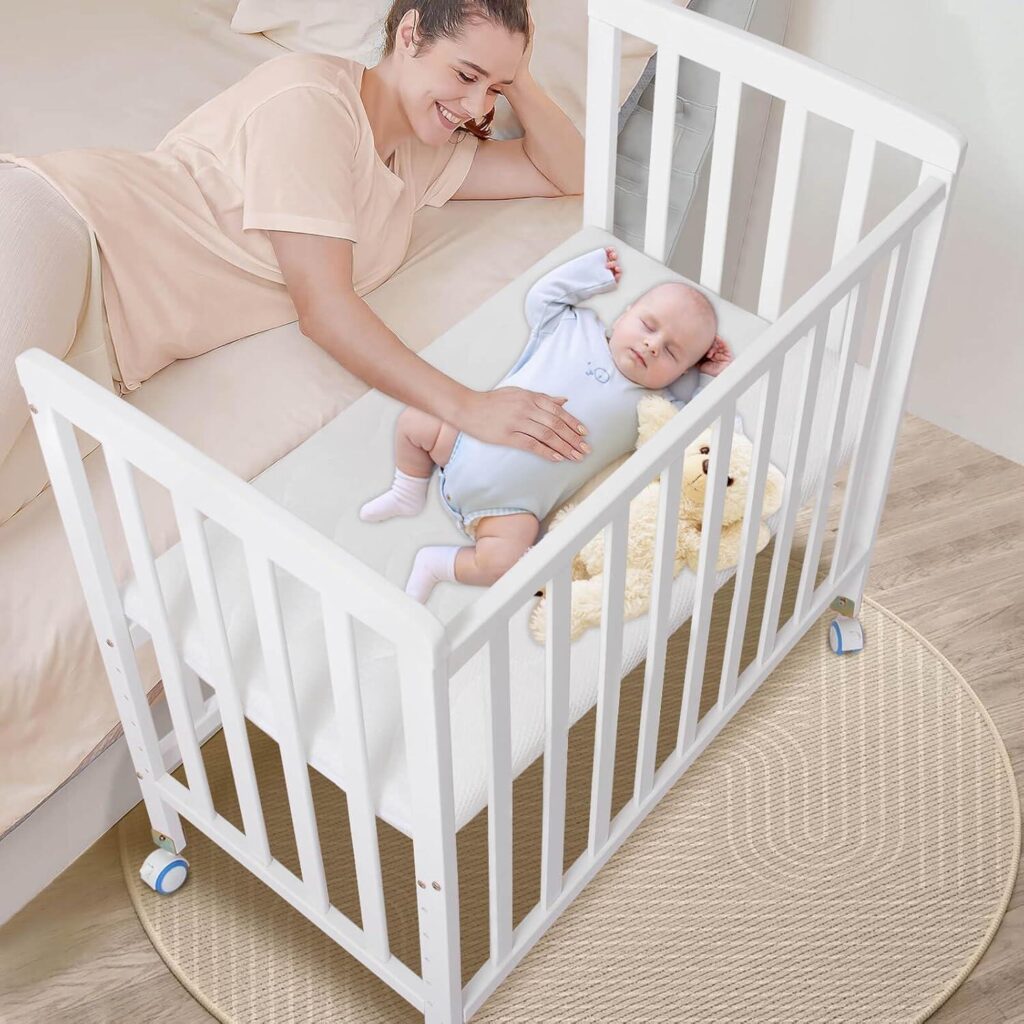
Types of convertible cribs
| Crib Type | Stages Included |
|---|---|
| 2-in-1 | Crib → Toddler bed |
| 3-in-1 | Crib → Toddler bed → Daybed |
| 4-in-1 | Crib → Toddler bed → Daybed → Full bed |
Some models require separate conversion kits, so check what’s included before buying. We chose a 4-in-1 model and used it well into preschool years.
What mattress should fit the crib?
Your crib is only as safe as the mattress inside it.
Use a firm, flat crib mattress that fits snugly inside the crib with no gaps larger than two fingers between the edge and the frame.
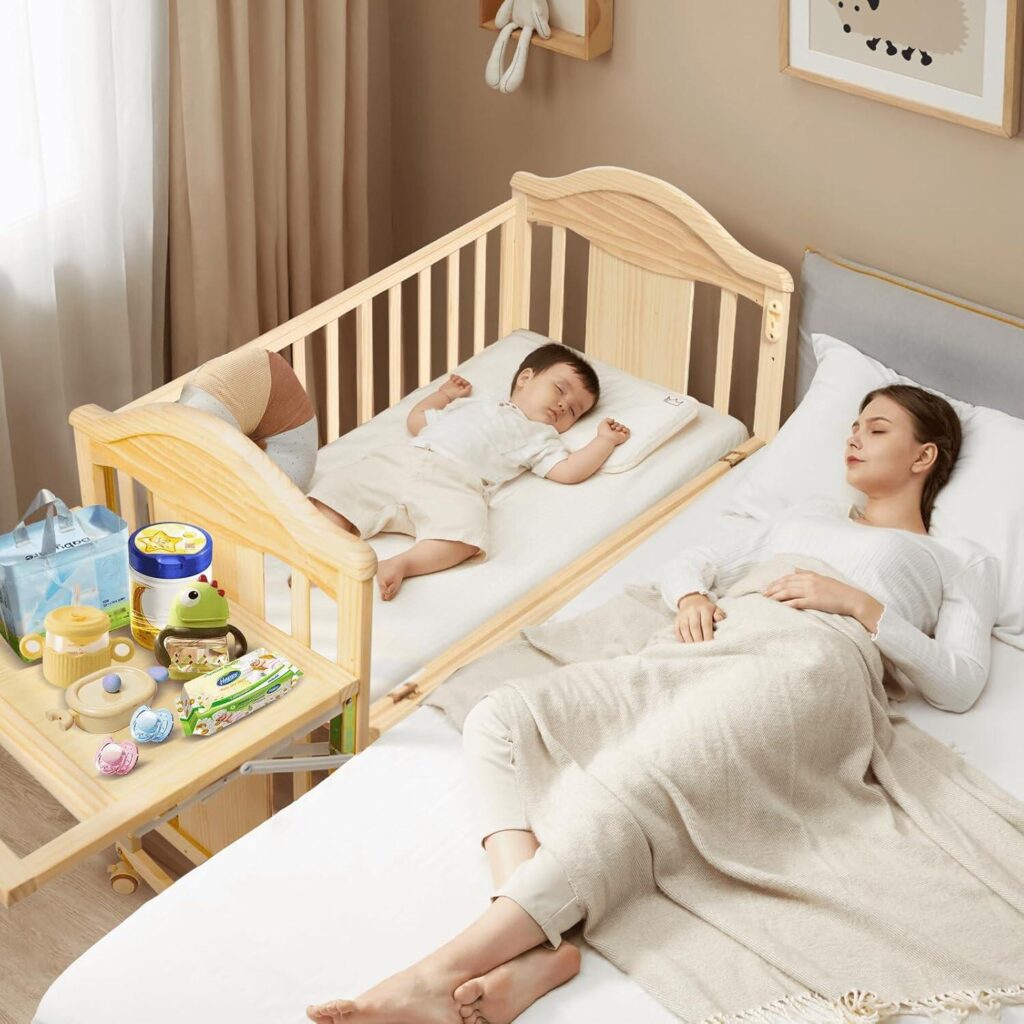
Crib mattress checklist
- Standard size for full-size cribs: 27 1/4" x 51 5/8"
- Firm, not soft—babies need support
- Waterproof or washable cover
- No gaps between mattress and crib sides
Don’t use rolled blankets or towels to fill gaps—it’s unsafe. A snug-fitting mattress is essential for safe sleep.
What features improve convenience?
Beyond safety, think about your day-to-day routine.
Look for features like adjustable mattress height, storage space, and convertible use to make life easier during diaper changes, sleep routines, and transitions.
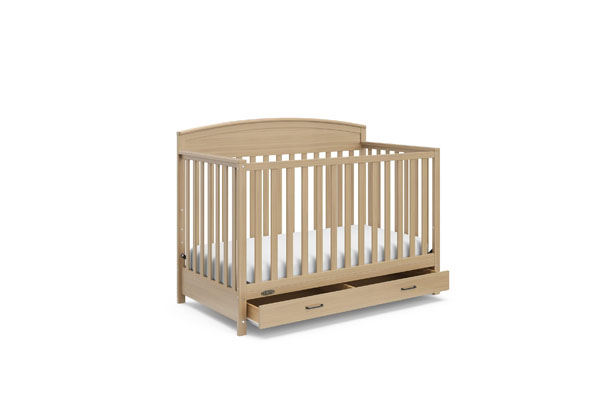
Helpful extras
| Feature | Why It Helps |
|---|---|
| Adjustable mattress height | Easier access during early months |
| Under-crib storage | Saves space in small nurseries |
| Wheels with locks | Easy to move, stable when locked |
| Convertible design | Longer usage, fewer future purchases |
We loved the adjustable mattress feature—especially in the first few months when reaching in too far felt tough on my back.
What style and material should you choose?
Looks aren’t everything, but they still matter in your space.
Choose a crib style and material that matches your home, fits your budget, and uses safe, durable materials like solid wood with non-toxic finishes.
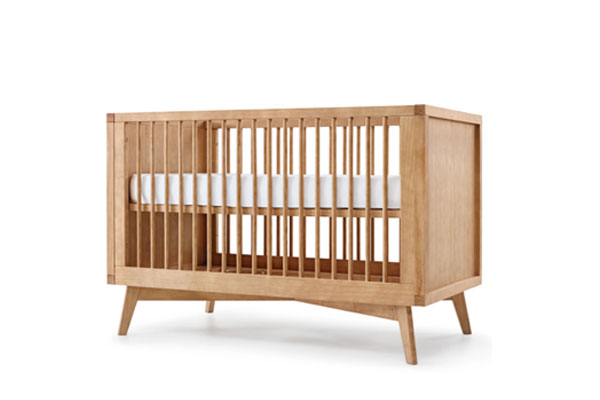
Popular crib materials
| Material | Pros | Cons |
|---|---|---|
| Solid wood | Durable, long-lasting | Heavier, more expensive |
| Engineered wood | Affordable, stylish | May chip or wear faster |
| Metal | Modern look, strong | Can be colder or industrial style |
Look for smooth edges, no peeling paint, and surfaces that wipe clean easily.
Conclusion
To choose the right crib for your child, start with safety, match it to your space and lifestyle, and look for features that support both sleep and parenting routines. A well-chosen crib is more than furniture—it’s where your baby’s sleep begins.




